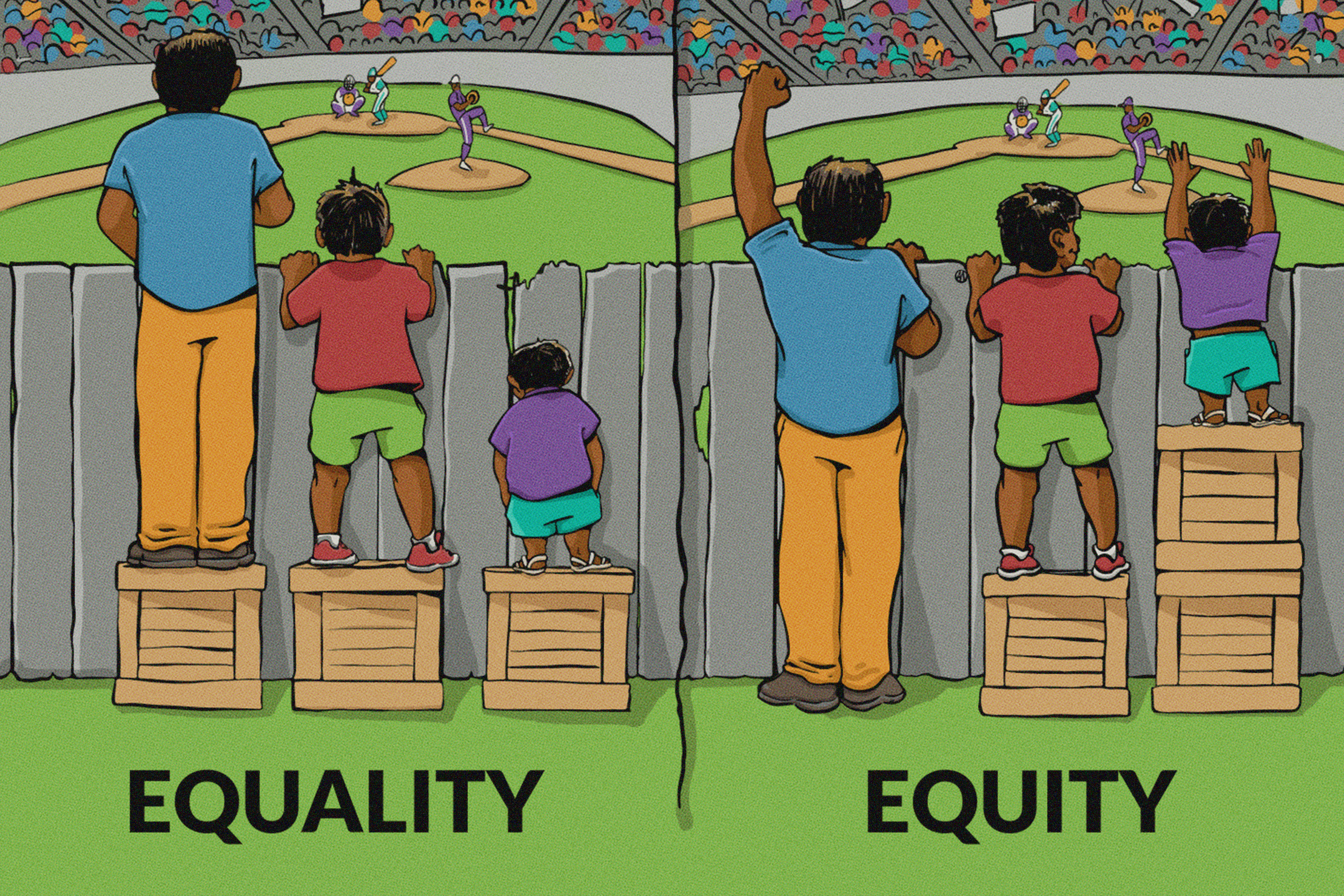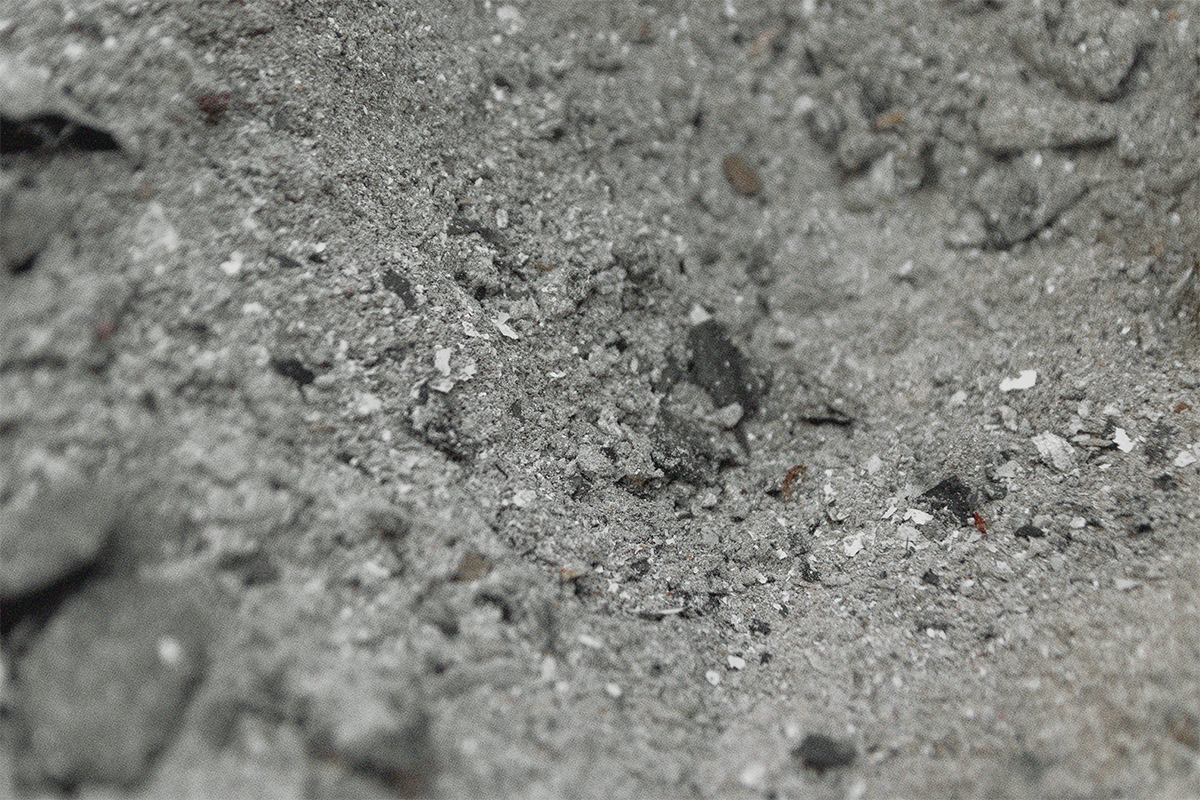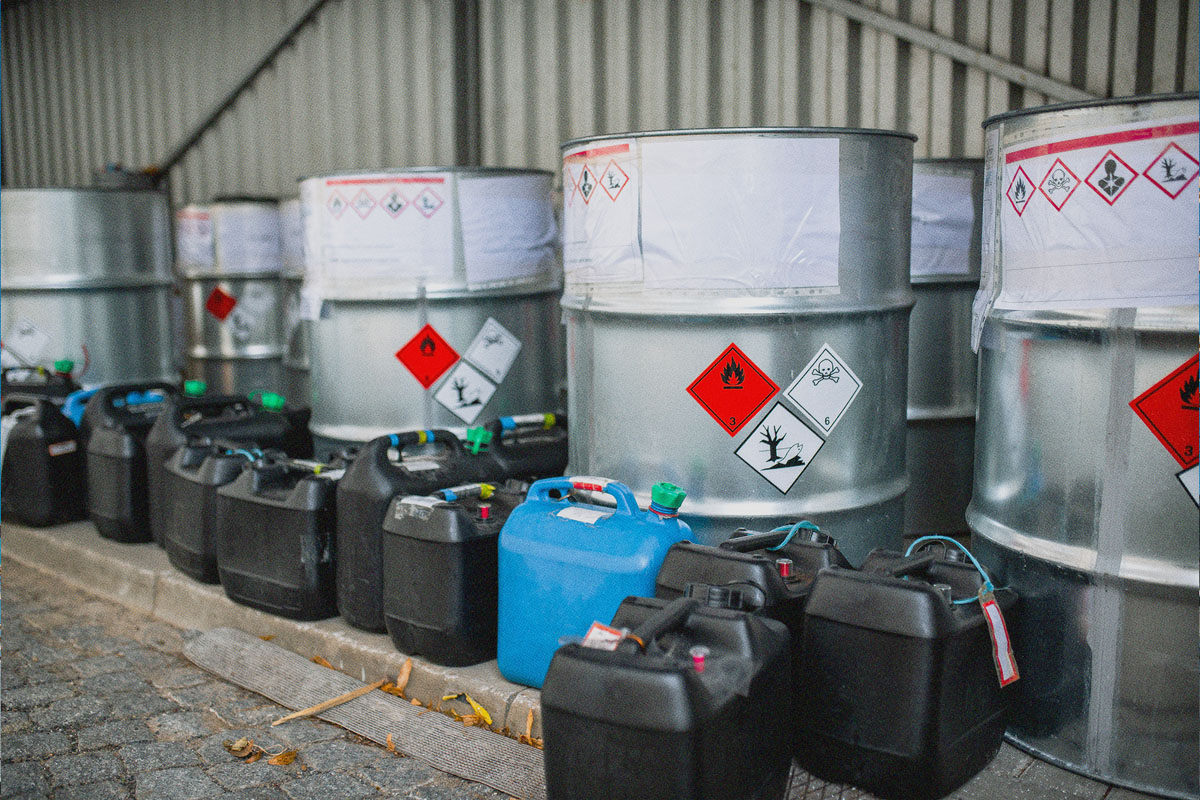 READ HABITABLE’S NEW REPORT
READ HABITABLE’S NEW REPORTHome Depot, the world’s largest home improvement retailer, announced Sept. 17 that it will phase out the sale of all carpets and rugs containing PFAS chemicals, expanding the reach of its Chemical Strategy adopted in 2017.
The company said it will stop purchasing for distribution in the U.S., Canada and online any carpets or rugs containing PFAS chemicals by the end of 2019. The new policy has important implications beyond reducing the use of these chemicals, which are associated with serious health harm and last virtually forever in the environment.
Environmental justice & equity: As with the 12 chemicals banned under its original 2017 Chemicals Strategy, this policy makes important strides toward equity in the green building movement. Because it impacts products at all price points, not just premium products and not just those that qualify for the retailer’s Eco-Options program, the policy ensures that all contractors and do-it-yourself customers get healthier products regardless of the brand purchased, and regardless of whether or not the product has been certified “green.” This makes it easier to implement recommendations such as those Habitable provides through our Informed™ approach.

Market Influence
A similar policy change led by the retailer in 2015, banning phthalates from all vinyl flooring it sells, was quickly adopted by all other major retailers such as Lowes, Menards, and Lumber Liquidators. Similarly, when Lowes led the industry in banning the sale of deadly paint strippers in May, 2018, its major competitors followed suit within months
Class approach to chemicals
PFAS refers to a class of nearly 15,000 that repel liquids and resist sticking, including well-known brands such as Teflon, Gore-Tex, Stainmaster and Scotchgard. Many brands have stopped using the most well studied, “long-chain” compounds in this class, but continue to use less studied “short-chain” compounds, causing confusion for consumers. Independent scientists agree that a commitment to avoiding all PFAS is the right approach for consumers and the overall environment.
Widespread PFAS Contamination of the Environment Is a Growing Concern. The Environmental Working Group (EWG) has identified over 700 sites where PFAS were detected and cited federal data suggesting that up to 110 million Americans may have PFAS in their drinking water.1 HBN’s analysis of chlorine and PVC production documented unexpectedly high use of PFAS as an alternative to mercury- and asbestos-based chlorine manufacturing technology, raising new concerns about the role of chlorine-based products and the growing concern over global PFAS exposures. The chemical industry argues that only a few of these compounds have been found unsafe, and all others should be presumed innocent until proven guilty. In 2019, 3M company launched a major public relations blitz2 to this effect, including a “PFAS Facts” website advocating that “Each PFAS compound needs to be evaluated based upon its own properties,”3 a process that would take federal regulators, at best, many decades to complete. EWG published a thorough refutation of 3M’s claims,4 and more than 250 independent scientists5 have called upon companies and regulators to stop producing and using PFAS except in the most essential applications. The Home Depot’s new carpet and rug policy, which we hope will soon be extended to other products including spray-on upholstery protection, such as 3M’s Scotchgard, follows this recommended class approach.
The Home Depot’s new policy commitment comes just two months before the release of the 2019 “Who’s Minding the Store?” Retailer Report Card, from the Mind the Store campaign, a nationwide coalition that challenges retailers to eliminate toxic chemicals and substitute safer alternatives. HBN is a coalition member and advised The Home Depot on its 2017 Chemical Strategy. The annual Report Card benchmarks retailers on their safer chemicals policies and implementation programs. The Home Depot earned a B- on the scorecard.
To learn more about PFAS and how to avoid them, watch the documentary The Devil You Know, available on all streaming services, and check out the new PFAS Central website, a project of our partners at the Green Science Policy Institute.
SOURCES
- https://www.ewg.org/research/report-110-million-americans-could-have-pfas-contaminated-drinking-water
- https://news.3m.com/press-release/company-english/3m-announces-pfas-initiatives-actions
- https://pfasfacts.com
- https://www.ewg.org/news-and-analysis/2019/09/science-pfas-rebuttal-3m-s-claims
- https://greensciencepolicy.org/madrid-statement/
A whole lot of meaning is packaged in the word equity—a term Webster’s defines as “fairness or justice in the way people are treated.” However, the easiest way to understand equity is often through pictures, like the one below.
While this photo considers height as an inequity, in real life, income, access to food and health care are often at the heart of equity discussions. Surprisingly, a critical topic often overlooked in the equity discussion is where we spent 90 percent of our lives—in buildings.1

Oregon Metro, otherwise known simply as Metro, released a report discussing toxics reduction and equity. Its section on building materials connects building materials and equity, calling attention to the need to reduce community exposure to toxic building materials in an equitable manner. Building materials seem harmless and inert in our homes, offices, schools, or cafes. But in 1991, the Environmental Protection Agency (EPA) characterized indoor air pollution as “one of the greatest threats to public health of all environmental problems”.2
A large proportion of indoor air pollution stems from building materials.3 In particular, asthmagens are of highest concern and contribute to indoor air pollution through the release of chemicals from the surface of building finishes.4 For example, carpet, furniture and wall decor release chemicals through degradation or abrasion.5 The chemicals end up in dust in our homes and can enter our bodies through the lungs, skin or mouth.6 Volatile organic compounds emitted from paints are also of concern.7 In fact, a study of children in Australia showed a strong association among indoor home exposure to VOCs and increased risk of asthma.8 Over 70 percent of building material asthmagens identified by Healthy Building Network (HBN) researchers are not covered by leading indoor air quality testing standards.9 These hazardous wastes and products used in building materials disproportionately affect historically marginalized communities of color, children and low-income families.10
Equity in housing is especially important for many families with low incomes who live in multifamily housing.11 Multifamily housing often poses challenges to achieving better air quality as pollutants easily travel between units due to inadequate ventilation. Residents are usually unable to improve building infrastructure themselves.12
Incorporating building materials into the equity discussion is only part of the solution. Product testing for chemicals of concern, biomonitoring, community health impact research, chemicals research, advocacy and education all stand to make a larger collective impact.13
For funders looking to increase diversity and equity initiatives in their grant making, the building industry provides a blooming landscape to foster substantial impact within communities. Here are some key questions to consider when funding proposals:
- What is the specific toxics reduction action?
- Are there particular populations or communities impacted more than the general population by the chemical/product/system in question?
- Does the action consider and address the structural barriers and existing resources available to a population?
- Does the recommendation ameliorate the disparity or gap in accessing resources for a marginalized community?
So often, sustainability standards and initiatives are cost prohibitive, developed for those with the most access and resources, in hopes that “someday” the solutions will trickle-down. In the meantime, children and the populations with the lowest income continue to bear the burden of toxic exposures and preventable health consequences. Habitable’s Informed™ healthy product guidance is changing that old, unsuccessful paradigm. Our resources will result in healthier products for everyone, and amplify the prospect for a healthier planet.
Visit informed.habitablefuture.org to join the movement towards a healthy future for all.
SOURCES
- Cuneo, Monica et. al. Toxics Reduction and Equity: Informing actions to reduce community risks from chemicals in products. Oregonmetro.gov, 2019. August 14, 2019. https://www.oregonmetro.gov/toxics-reduction-and-equity-study
- Ibid.
- Environmental Protection Agency. “Fundamentals of Indoor Air Quality in Buildings.” Indoor Air Quality, 1 Aug. 2018, www.epa.gov/indoor-air-quality-iaq/fundamentals-indoor-air-quality-buildings#Factors.
- Lott, Sarah, and Jim Vallette. Full Disclosure Required: A Strategy to Prevent Asthma Through Building Product Selection. Healthy Building Network, December 2013. August 14, 2019. https://habitablefuture.org/wp-content/uploads/2024/03/93-full-disclosure-required-a-strategy-to-prevent-asthma-through-building-product-selection.pdf.
- Ibid.
- Singla, Veena. Toxic Dust: The Dangerous Chemical Brew in Every Home. Natural Resources Defense Council, September 13, 2016. August 20, 2019. https://www.nrdc.org/experts/veena-singla/toxic-dust-dangerous-chemical-brew-every-home
- Lott, Sarah, and Jim Vallette. Full Disclosure Required: A Strategy to Prevent Asthma Through Building Product Selection. Healthy Building Network, December 2013. August 14, 2019. https://habitablefuture.org/wp-content/uploads/2024/03/93-full-disclosure-required-a-strategy-to-prevent-asthma-through-building-product-selection.pdf.
- Rumchev, K, et al. Association of Domestic Exposure to Volatile Organic Compounds with Asthma in Young Children. Thorax, BMJ Publishing Group Ltd, 1 Sep. 2004. August 14, 2019. http://thorax.bmj.com/content/59/9/746.
- Lott, Sarah, and Jim Vallette. Full Disclosure Required: A Strategy to Prevent Asthma Through Building Product Selection. Healthy Building Network, December 2013. August 14, 2019. https://habitablefuture.org/wp-content/uploads/2024/03/93-full-disclosure-required-a-strategy-to-prevent-asthma-through-building-product-selection.pdf.
- Cuneo, Monica et. al. Toxics Reduction and Equity: Informing actions to reduce community risks from chemicals in products. Oregonmetro.gov, 2019. August 14, 2019. https://www.oregonmetro.gov/toxics-reduction-and-equity-study
- Ibid.
- Hayes, Vicky et al. Evaluating Ventilation in Multifamily Buildings. Home Energy Magazine, August 1994. August 14, 2019. www.homeenergy.org/show/article/nav/ventilation/id/1059.
- Cuneo, Monica et. al. Toxics Reduction and Equity: Informing actions to reduce community risks from chemicals in products. Oregonmetro.gov, 2019. August 14, 2019. https://www.oregonmetro.gov/toxics-reduction-and-equity-study
When celebrated Victorian painter Edward Burne-Jones learned that a favorite pigment—it was called Mummy Brown—was in fact manufactured from the desecrated Egyptian dead, he banished it from his palette and bore his remaining tubes to a solemn burial in his English garden.[1] Once you know better, you have to do better.
Transparency in the supply chain can reveal inconvenient truths about favored products. A fascinating new article about the plywood supply chain brings into view new incentives to stop using fly ash in building products.
In What You Don’t See, Brent Sturlaugson, a practicing architect and associate professor at the University of Kentucky attempts a full accounting of the environmental, social, financial, and political impacts he attributes to the supply chain for Georgia Pacific (GP) plywood. He opens his ledger at the world’s largest open pit coal mine, Peabody Energy’s North Antelope Rochelle Mine, located in the heart of Wyoming’s Thunder Basin National Grasslands. From there the environmental and health costs add up, many of them allocated to the utility that powers GP’s Madison, Georgia plant. The Robert W. Scherer Plant in Monroe County, Georgia, has been calculated to be the largest, dirtiest coal fired power plant in the United States.[2]

This caught the attention of the Healthy Building Network (HBN) Research Team, who previously identified this power plant as a huge mercury polluter. It is also the leading supplier of fly ash to U.S. carpet companies that use the ash as filler—replacing limestone in carpet tiles—in order to qualify for recycled content credits in LEED, the Living Building Challenge, and various government procurement standards. What we had not realized was that the Scherer plant relied upon a single source of coal, the North Antelope Rochelle Mine. HBN and others[3] have long recommended against the use of fly ash in various building products because of the heavy metal content of the ash and the cost incentives fly ash “recycling” provide to continue burning coal – absent reuse, the fly ash must be expensively managed as a hazardous waste. What You Don’t See compels us to consider the ash as processed coal, the original raw material ingredient. In this case, coal mined from the seam of a single, particularly gnarly open pit mine.
Located near Gillette, WY, the mine occupies territory whose history is steeped in the genocide of Indigenous Peoples who negotiated treaty rights to the region in the mid-1800’s. By the end of the century they lost their livelihood to the extermination of the American Bison, and then their land to well-documented, systemic treaty violations. Environmentalists and ranchers alike view the mine as a disaster for the local and global environment. It is a financial disaster for the American taxpayer, according to the U.S. General Accounting Office which cites the mine as an example of corrupt Bureau of Land Management practices that include no bid contracts, financial terms that deprive the U.S. of fair market value, and a brazen lack of transparency. All in violation of federal laws and regulations.
Squandered water and subsidized carbon emissions are only the beginning of the staggering sustainability losses from this coal, according to Sturlaugson’s detailed accounting, which also includes: “dark money” political contributions from the Koch brothers, the use of bankruptcy laws to renege on union pension obligations, and significant releases of toxic chemicals that can cause cancer, respiratory disease, and reproductive and neurological impacts.
Like the rich umber of Mummy Brown pigment, recycled coal ash in building products has a superficial appeal, until you learn the truth. What You Don’t See opens our eyes even wider to the reasons why the use of coal ash—processed coal—is unacceptable in green buildings and building products. Burying these products in our gardens or landfills won’t do. But we can and must root them out of our green rating system and recycling incentives.
SOURCES
- From the article Blue As Can Be, by Simon Schama, a fascinating history of prized (frequently toxic) artistic pigments. Schama, Simon. “Blue as Can Be.” The New Yorker, September 3, 2018.
- Schneider, Jordan, Travis Madsen, and Julian Boggs. “America’s Dirtiest Power Plants: Their Oversized Contribution to Global Warming and What We Can Do About It.” Environment America Research & Policy Center, September 2013. https://environmentamericacenter.org/sites/environment/files/reports/Dirty%20Power%20Plants.pdf.
- BuildingGreen and Perkins+Will are among those that have recommended against the use of coal fly ash in certain building products. Wilson, Alex. “OP-ED: EBN’s Position on Fly Ash.” Environmental Building News, August 30, 2010. https://www.buildinggreen.com/op-ed/ebns-position-fly-ash.; Glazer, Breeze, Craig Graber, Carolyn Roose, Peter Syrett, and Chris Youssef. “Fly Ash in Concrete.” Perkins+Will, November 2011. http://assets.ctfassets.net/t0qcl9kymnlu/1Tx57nRsWYYMEC824CkOaI/38239c5e0fb2044af10bc2b1fac38cf8/FlyAsh_WhitePaper.pdf.
- Vallette, Jim, Rebecca Stamm, and Tom Lent. “Eliminating Toxics in Carpet: Lessons for the Future of Recycling.” Healthy Building Network, October 2017. https://habitablefuture.org/wp-content/uploads/2024/03/81-eliminating-toxics-in-carpet-lessons-for-the-future-of-recycling.pdf. (see p. 21)
- Walsh, Bill. “Home Depot Raises The Bar On Hazard Avoidance – New Chemical Strategy Is An Important Step Towards Healthier Product Options.” Healthy Building Network Blog, October 25, 2017. https://habitablefuture.org/resources/home-depot-raises-the-bar-on-hazard-avoidance/.
Discover how bisphenols and phthalates, commonly used in plastics for added strength or flexibility, can disrupt hormone function, and learn ways to reduce their use for improved health in this informative video.

Phase 1 of this report is the first of its kind plant-by-plant accounting of the production, use, and releases of chlorine and related pollution around the world. It is intended to inform the efforts of building product manufacturers to reduce pollution in their supply chains.
Chlorine is a key feedstock for a wide range of chemicals and consumer products, and the major ingredient of polyvinyl chloride (PVC) plastic. The report includes details about the largest 86 chlor-alkali facilities and reveals their connections to 56 PVC resin plants in the Americas, Africa and Europe. (The second phase of this project will inventory the industry in Asia.) A substantial number of these facilities, which are identified in the report, continue to use outmoded and highly polluting mercury or asbestos.
Demand from manufacturers of building and construction products now drives the production of chlorine, the key ingredient of PVC used in pipes, siding, roofing membranes, wall covering, flooring, and carpeting. It is also an essential feedstock for epoxies used in adhesives and flooring topcoats, and for polyurethane used in insulation and flooring.
Key findings include:
- In the United States, the chlor-alkali industry is the only industry that still uses asbestos, importing 480 tons per year on average for 11 chlor-alkali plants in the country (including 7 of the 12 largest plants).
- The only suppliers of asbestos to the chlor-alkali industry are Brazil (which banned its production, although exports continue for the moment) and Russia, whose Uralasbest mine is poised to become the sole source of asbestos once Brazil’s ban is in place.
- The US Gulf Coast is the world’s lowest-cost region for production of chlorine and its derivatives. It is home to 9 facilities that use asbestos technology, and some of the industry’s worst polluters including 5 of the 6 largest emitters of dioxin.
- One Gulf Coast facility has been found responsible for chronic releases of PVC plastic pellets into the Gulf of Mexico watershed.
- The US, Russia and Germany are the only countries in this report that allow the indefinite use of both mercury and asbestos in chlorine production.
- The world’s two largest chemical corporations – BASF and DowDuPont – have not announced any plans to phase out the use of mercury and asbestos, respectively, at their plants in Germany.
- Chlor-alkali facilities are major sources of rising levels of carbon tetrachloride, a potent global warming and ozone depleting gas, in the earth’s atmosphere.
- Far more chlorinated pollution, such as dioxins and vinyl chloride monomer, is released from chlor-alkali plants that produce feedstocks for the PVC industry than from plants that produce chlorine for other uses.
Supplemental Documents:
More than 15% of North Americans report an unusual hypersensitivity to common chemical products such as those used in new-home construction. Another 40% may have mild symptoms of which they’re unaware.
This book explores the journey of designing and building a prototype healthy house, aiming to provide a sanctuary for healing and addressing environmental hypersensitivity, serving as a comprehensive guide for those interested in healthier approaches to design, construction, or remodeling.

While attending a 2018 meeting of U.S. EPA’s National Environmental Justice Advisory Council (NEJAC) in Boston, I heard the testimony of Delma and Christine Bennet. They live in Mossville, LA, amidst what is likely the nation’s largest concentration of PVC (polyvinyl chloride) manufacturing facilities. I was there to present the findings of HBN’s inventory of pollution associated with the chlorine/PVC supply chain.
Our study found, among other things, that the Gulf Coast region (which includes Mossville) is home to nine facilities that use outmoded asbestos technology, and home also to some of the industry’s worst polluters: Five of the six largest emitters of dioxins––a long lasting, extremely toxic family of hazardous waste that causes cancer and many other health impacts, are located there. The Bennets reminded the EPA that according to studies by a division of the Centers for Disease Control, Mossville residents have three times higher levels of dioxin in their blood than average Americans, and the dioxin levels found in their yards and attic dust exceed regulatory standards typically used for toxic waste remediations of industrial sites. Even the vegetables in their gardens tested positive for dioxin.
When I think about why we fight so hard to exclude PVC from any palette of green, healthy, or sustainable building materials, I think first of people like Delma and Christine. I then think about the many non-profits, government agencies, and private enterprises dedicated to recycling. Way back in the 1990’s, the industry Association of Plastic Recyclers declared PVC a contaminant to the recycling stream. A generation later, a 2016 study by the Circular Economy evangelist Ellen MacArthur Foundation called out PVC packaging for global phase-out, citing low recycling rates and chemical hazard concerns. Much of the concern about PVC packaging is driven by worries about ocean pollution. HBN’s study found that at least one U.S. PVC manufacturer is routinely dumping tons of PVC pellets into local waterways and refusing to stop even after being ordered to do so by the state of Texas.
The list goes on. Our report documents the types of industrial pollution in addition to dioxin that could be reduced or avoided by a switch to more recyclable plastics that are not made with the chlorine that is an essential ingredient of PVC, including ozone depleting and potent global warming gasses. HBN’s earlier studies have documented the hazards posed by legacy pollutants that are returning to our consumer products in recycled PVC content––heavy metals such as lead, and endocrine-disrupting plasticizers known as phthalates.

There is a better way.
There is virtually no use of PVC in building products that could not be replaced with another plastic or other material. Indeed, from siding, to wallpaper, to window frames, PVC has displaced materials that are more recyclable, such as aluminum and paper. Because the industry is not held accountable for the environmental health damages wrought in places like Mossville, PVC has artificially low costs that present barriers to entry, or inhibit market expansion of less hazardous, more sustainable alternatives.
That is why PVC should not be part of any building, or any building rating system, that claims to advance environmental and health objectives. It’s not green. It’s not healthy. It’s not sustainable. It’s just cheap––for us. Because folks like Delma and Christine Bennet pay the true cost.

Know Better
Learn more about the implications of chlorine as a feedstock in plastics in HBN’s Chlorine and Building Materials report.
As noted in Healthy Building Network’s(HBN) Chlorine and Building Materials report, chlorine production is a major source of releases of carbon tetrachloride, a potent global warming and ozone depleting gas as well as a carcinogen.
As the report reminds us, it’s important to consider not only the use-phase impacts of building products, but the entire life cycle, including primary chemical production that’s several steps back from final product manufacture.
Blowing agents are used in plastic foam insulation to create the foam structure and also contribute to the insulative properties. Over the years, manufacturers have cycled through a range of fluorocarbons as each prior class is phased out due to environmental concerns – from ozone depleting chlorofluorocarbons (CFCs) to less ozone depleting hydrochlorofluorocarbons (HCFCs) to the non-ozone depleting but high global warming potential hydrofluorocarbons (HFCs) currently common in many types of foam insulation. Manufacturers have now begun the latest shift to next generation, low global warming potential hydrofluoroolefins (HFOs). For extruded polystyrene (XPS), this translates to a shift from commonly used HFC-134a with a global warming potential (GWP) of 1,430 to HFO-1234ze with a GWP of six.2
The summary of these chemical transitions only tells part of the story. While HFOs do not directly deplete the ozone layer or significantly contribute to global warming, many HFOs use carbon tetrachloride (CCl4) as a chemical feedstock. This includes HFO-1234ze, the replacement for HFC-134a (which does not use CCl4) in many applications.3

How is it that this ozone depleting substance is still in use? Many uses of carbon tetrachloride were phased out in 1995, under the terms of the Montreal Protocol to protect the ozone layer. But the Montreal Protocol phase-outs exempted the use of CCl4 as a chemical feedstock, under the assumption that emissions would be minor.4 However, carbon tetrachloride “is not decreasing in the atmosphere as rapidly as expected” based on its known lifetime and emissions, according to a 2016 report on the Mystery of Carbon Tetrachloride. The authors of this report concluded that emissions of carbon tetrachloride during its production, and fugitive emissions from its use as a chemical feedstock, have been significantly unreported and underestimated.5
Production of carbon tetrachloride is likely to increase as industry replaces HFC blowing agents (and refrigerants), most of which aren’t produced with carbon tetrachloride, with HFOs that do use CCl4 as a feedstock.[6] With increased production and use of carbon tetrachloride, increased emissions are expected – and that’s bad news for the earth’s recovering ozone layer.
We recommend against the use of plastic foam insulation whenever possible, but if you do use it, some products are available that use other, less impactful, blowing agents, including hydrocarbons and water. For more recommendations about preferable insulation from a health hazard perspective, review our product guidance at informed.habitablefuture.org.
SOURCES
- According to US Toxics Release Inventory (TRI) data from 2012 to 2015, half of the 10 leading sources of carbon tetrachloride releases were chemical complexes with chlor-alkali plants. Reporting from other countries is non-existent or incomplete. The European Pollutant Release and Transfer Register (E-PRTR) contains no reported emissions of carbon tetrachloride from chlorine plants in the European Union between 2012 and 2016. Manufacturers are required to report carbon tetrachloride releases in excess of 100 kg per year, however, European scientists tracking carbon tetrachloride emissions say the industry is likely not reporting emissions. A 2016 report estimated that the chlor-alkali industry worldwide was responsible for about 10,000 metric tons of unreported carbon tetrachloride releases, or about 40% of all unreported carbon tetrachloride releases.
- “Comments to the U.S. Environmental Protection Agency (EPA) on the Scope of Its Risk Evaluation for the TSCA Work Plan Chemical: CARBON TETRACHLORIDE (CTC) CAS Reg. No. 56-23-5.” Safer Chemicals, Healthy Families; Environmental Health Strategy Center; Healthy Building Network, March 15, 2017.; “Common Product: XPS Insulation (Extruded Polystyrene).” Pharos Project. Accessed February 1, 2017. https://pharos.habitablefuture.org/common-products/2078867.; “Substitutes in Polystyrene: Extruded Boardstock and Billet.” United States Environmental Protection Agency: Significant New Alternatives Policy (SNAP). Accessed July 26, 2018. https://www.epa.gov/snap/substitutes-polystyrene-extruded-boardstock-and-billet.Global Warming Potential (GWP) defined — Certain gasses, commonly referred to as “greenhouse gasses”, have the ability to warm the earth by absorbing heat from the sun and trapping it in the atmosphere. Global warming potential is a relative measure of how much heat a given greenhouse gas will absorb in a given time period. GWP numbers are relative to carbon dioxide, which has a GWP of 1. The larger the GWP number, the more a gas warms the earth. Learn more about interpreting GWP numbers at www.epa.gov/ghgemissions/ understanding-global-warming-potentials.
- Liang, Q., P.A. Newman, and S. Reimann. “SPARC Report on the Mystery of Carbon Tetrachloride.” Stratosphere-troposphere Processes and their Role in Climate, July 2016. https://www.wcrp-climate.org/WCRP-publications/2016/SPARC_ Report7_2016.pdf.
- Vallette, Jim. “Chlorine and Building Materials: A Global Inventory of Production Technologies, Markets, and Pollution – Phase 1: Africa, The Americas, and Europe.” Healthy Building Network, July 2018. https://habitablefuture.org/resources/chlorine-building-materials-project-phase-1-africa-the-americas-and-europe/.
- Liang, Q., P.A. Newman, and S. Reimann. “SPARC Report on the Mystery of Carbon Tetrachloride.” Stratosphere-troposphere Processes and their Role in Climate, July 2016. https://www.wcrp-climate.org/WCRP-publications/2016/SPARC_ Report7_2016.pdf.

Healthy Building Network’s report on post-consumer carpet feedstocks calls for eliminating over 40 highly toxic chemicals in carpets that threaten public health and impede recycling. These toxics are known to cause respiratory disease, heart attacks, cancer, and asthma, and impair children’s developmental health.
The report outlines strategies to protect public health and the environment by improving product transparency, eliminating dangerous chemicals from carpets, and increasing carpet recycling rates. It also reveals surprising efforts in the industry to remove many of these toxic substances from carpet design.

Building products incorporating antimicrobial additives are becoming increasingly prevalent. Paints, and other touchable surfaces such as countertops, and virtually any product considered as an interior finish may contain one or a combination of antimicrobials. These agents are considered pesticides, but their identity—and related hazards—can be difficult for the average person to discover. This lack of transparency creates a hurdle for the informed selection of products with reduced negative impacts.
No evidence yet exists to demonstrate that products intended for use in interior spaces that incorporate antimicrobial additives actually result in healthier populations. Further, antimicrobials may have negative impacts on both people and the environment. This paper, prepared by Perkins&Will in partnership with HBN, aims to present current information about reported or potential health and environmental impacts of antimicrobial substances as commonly used within the building industry, and to assist architects, designers, building owners, tenants, and contractors in understanding those impacts.
In response to growing concerns over COVID-19, Healthy Building Network (HBN) and global architecture and design firm Perkins and Will reexamined and reaffirmed the conclusions and recommendations of this white paper.

 Health
Health Equity
Equity Pollution
Pollution Climate Change
Climate Change